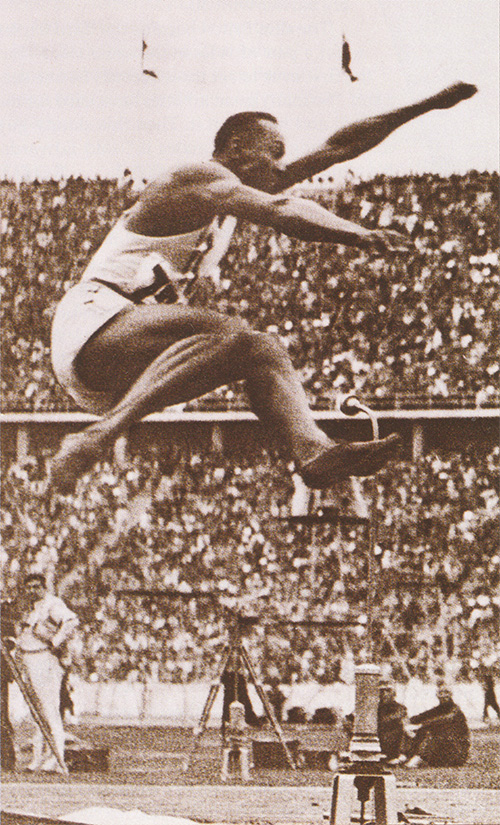
LIKE A CONNECTICUT YANKEE plopped down in King Arthur’s court, a modern fan or athlete transported back to the track & field world as it existed when Track & Field News came on the scene wouldn’t recognize the landscape.
There are the obvious things that everybody knows, like the track was made of dirt, poles were made of bamboo or aluminum and vertical jumpers landed in pits of sawdust.
Javelins were made of wood, and throwers threw out of dirt circles (shot putters even wearing spikes).
Timing was to 10ths of a second, and in the United States and the British Empire the measure was still imperial, not metric.
The two horizontal jumps were known as the broad jump and the hop, step and jump in English.
Tiebreaking rules in the vertical jumps weren’t quite as sophisticated as they are now, with the result that at the ‘47 NCAA Championships, for example, there was a 6-way tie for 1st in the vault that went unbroken.
The AAU was in one of its metric phases, so the ‘47 nationals included, in addition to today’s standards, 4×1, 4×4 and sprint medley relays, plus the 56lb weight. A separate meet was held for the decathlon nationals.
The NCAA was still run in yards in non-Olympic years, so the ‘47 edition had the 100, 220, 440, 880, mile, 2M, 120H, 220LH, HJ, PV, LJ (or BJ), SP, DT, JT. No long distances, no steeplechase, no triple jump or hammer. No decathlon.
Women definitely weren’t a major part of the equation (and wouldn’t be for a long time, the NCAA not adding women until ‘82).
The women’s AAU meet was short and to the point — or maybe pointless, given the choice of events: 50, 100, 200, 80H, 4×1, HJ, LJ, SP (8lb), DT, JT and BT (uh, that’s baseball throw!). (Continued below)
World Records (see box) were a far cry from today’s standards. The AAU’s list of accepted American Record disciplines was truly boggling. For running alone, the accepted yard events were (hold your breath) the 60, 100, 220, 330, 440, 660, 880, 1000, 1320, 10M, 15M, 20M, 25M, 1 hour, 2 hours, 2M steeplechase.
Walking records were accepted at no fewer than 31 distances.
The official AAU rulebook listed the specifications for (we kid you not!) the potato race, the 3-legged race, the sack race, running high jump from springboard, running high dive, running high dive from springboard, running long dive, fence vault, running high kick, double kick, running hitch and kick and chinning the bar.
The guide also dedicated three pages to the rules for the tug-of-war without cleats. It was important to note that “no prepared boots or shoes, heel plates (sunken or otherwise), projecting nails, tips, springs, Blakeys, rubbers, points, hollows or projections of any kind shall be allowed.”
With some of this silliness persisting into the ‘60s, is it any wonder that the nation’s collegiate coaches felt the need to rebel against an organization they felt was perhaps just a little out of touch?
The sport still has a long way to go, but when you consider just how far we’ve come in the last 75 years, maybe the rest of the journey isn’t so long after all. ◻︎